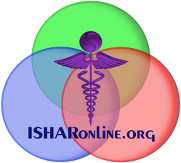Aromatherapy
Aromatherapy uses plant materials and aromatic plant oils, including essential oils, and other aromatic compounds for the purpose of altering one's mood, cognitive, psychological or physical well-being.[1] It can be offered as a complementary therapy or alternative medicine.
Aromatherapists, who specialise in the practice of aromatherapy, utilise blends of therapeutic essential oils that can be issued through topical application, massage, inhalation or water immersion to stimulate a desired response.
Some essential oils such as tea tree[4] have demonstrated anti-microbial effects, but there is still a lack of clinical evidence proving efficacy against acute bacterial, fungal, or viral infections.
Definition
The use of essential oils for therapeutic, spiritual, hygienic and ritualistic purposes goes back to a number of ancient civilizations including the Chinese, Indians, Egyptians, Greeks, and Romans who used them in cosmetics, perfumes and drugs.[7]
Oils are described by Dioscorides, along with beliefs of the time regarding their healing properties, in his De Materia Medica, written in the first century.[8] Distilled essential oils have been employed as medicines since the invention of distillation in the eleventh century,[9] when Avicenna isolated essential oils using steam distillation.[10]
The concept of aromatherapy was first mooted by a small number of European scientists and doctors, in about[weasel words]1907[citation needed]. In 1937, the word first appeared in print in a French book on the subject: Aromathérapie: Les Huiles Essentielles, Hormones Végétales by René-Maurice Gattefossé, a chemist. An English version was published in 1993.[11] In 1910, Gattefossé burned a hand very badly and later claimed he treated it effectively with lavender oil.[12]
A French surgeon, Jean Valnet, pioneered the medicinal uses of essential oils, which he used as antiseptics in the treatment of wounded soldiers during World War II.[13]
Summary
Modes of application
The modes of application of aromatherapy include:
- Aerial diffusion: for environmental fragrancing or aerial disinfection
- Direct inhalation: for respiratory disinfection, decongestion, expectoration as well as psychological effects
- Topical applications: for general massage, baths, compresses, therapeutic skin care[14]
Materials
Some of the materials employed include:
- Essential oils: Fragrant oils extracted from plants chiefly through steam distillation (e.g., eucalyptus oil) or expression (grapefruitoil). However, the term is also occasionally used to describe fragrant oils extracted from plant material by any solvent extraction. This material includes incense reed diffusers.
- Absolutes: Fragrant oils extracted primarily from flowers or delicate plant tissues through solvent or supercritical fluid extraction (e.g., rose absolute). The term is also used to describe oils extracted from fragrant butters, concretes, and enfleurage pommades using ethanol.
- Carrier oils: Typically oily plant base triacylglycerides that dilute essential oils for use on the skin (e.g., sweet almond oil).
- Herbal distillates or hydrosols: The aqueous by-products of the distillation process (e.g., rosewater). There are many herbs that make herbal distillates and they have culinary uses, medicinal uses and skin care uses[citation needed]. Common herbal distillates are chamomile, rose, and lemon balm.
- Infusions: Aqueous extracts of various plant material (e.g., infusion of chamomile).
- Phytoncides: Various volatile organic compounds from plants that kill microbes[citation needed]. Many terpene-based fragrant oils and sulfuric compounds from plants in the genus "Allium" are phytoncides[citation needed], though the latter are likely less commonly used in aromatherapy due to their disagreeable odors.
- Vaporizer (Volatized) raw herbs: Typically higher oil content plant based materials dried, crushed, and heated to extract and inhale the aromatic oil vapors in a direct inhalation modality.
Theory
Aromatherapy is the treatment or prevention of affliction by use of essential oils. Other stated uses include pain and anxiety reduction, enhancement of energy and short-term memory, relaxation, hair loss prevention, and reduction of eczema-induced itching.[15][16]
Two basic mechanisms are offered to explain the purported effects. One is the influence of aroma on the brain, especially the limbic system through the olfactory system.[17] The other is the direct pharmacological effects of the essential oils.[18]
In the English-speaking world, practitioners tend to emphasize the use of oils in massage[citation needed].
Research Summary
The consensus among most medical professionals is that while some aromas have demonstrated effects on mood and relaxation and may have related benefits for patients, there is currently insufficient evidence to confirm the claims made for aromatherapy.[25] Scientific research on the cause and effects of aromatherapy is limited, although in vitro testing has revealed some antibacterial and antiviral effects.[26][27] There is little evidence of any long-term results from an aromatherapy massage other than the pleasure achieved from a pleasant-smelling massage.[28] A few double blind studies in the field of clinical psychology relating to the treatment of severe dementia have been published.[29][30] Essential oils have a demonstrated efficacy in dental mouthwash products.[31]
Aromatherapy has been also promoted for its ability to fight cancer; however, according to the American Cancer Society, "available scientific evidence does not support claims that aromatherapy is effective in preventing or treating cancer".[25]
Cited: Wikipedia
